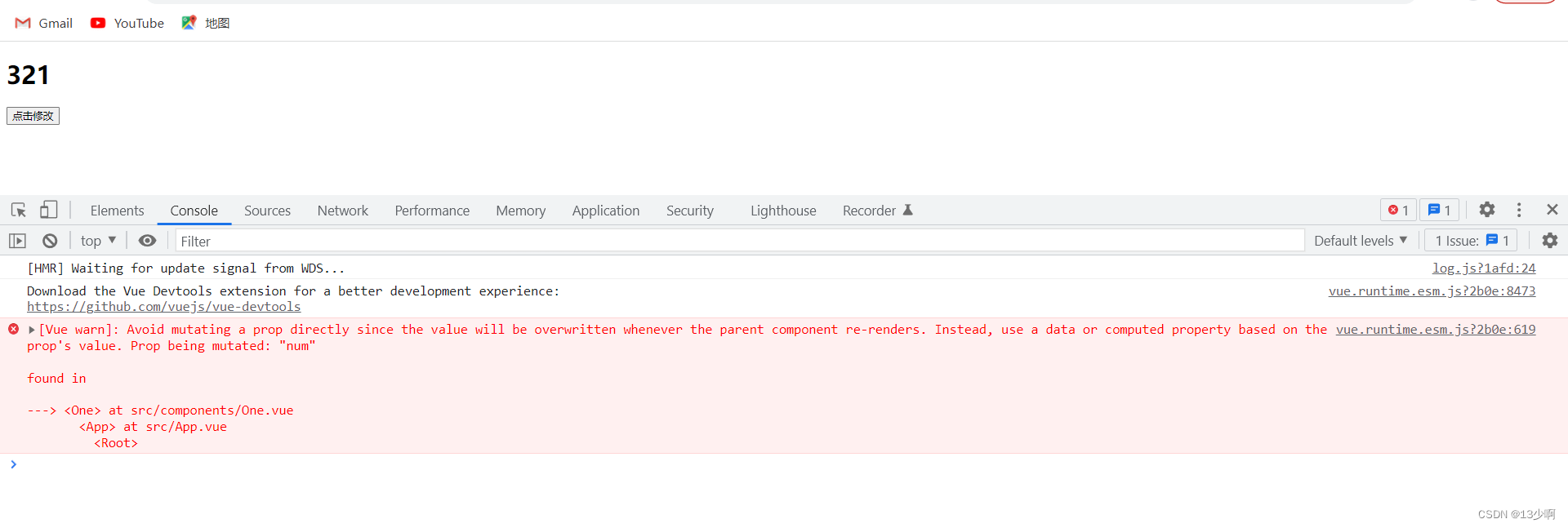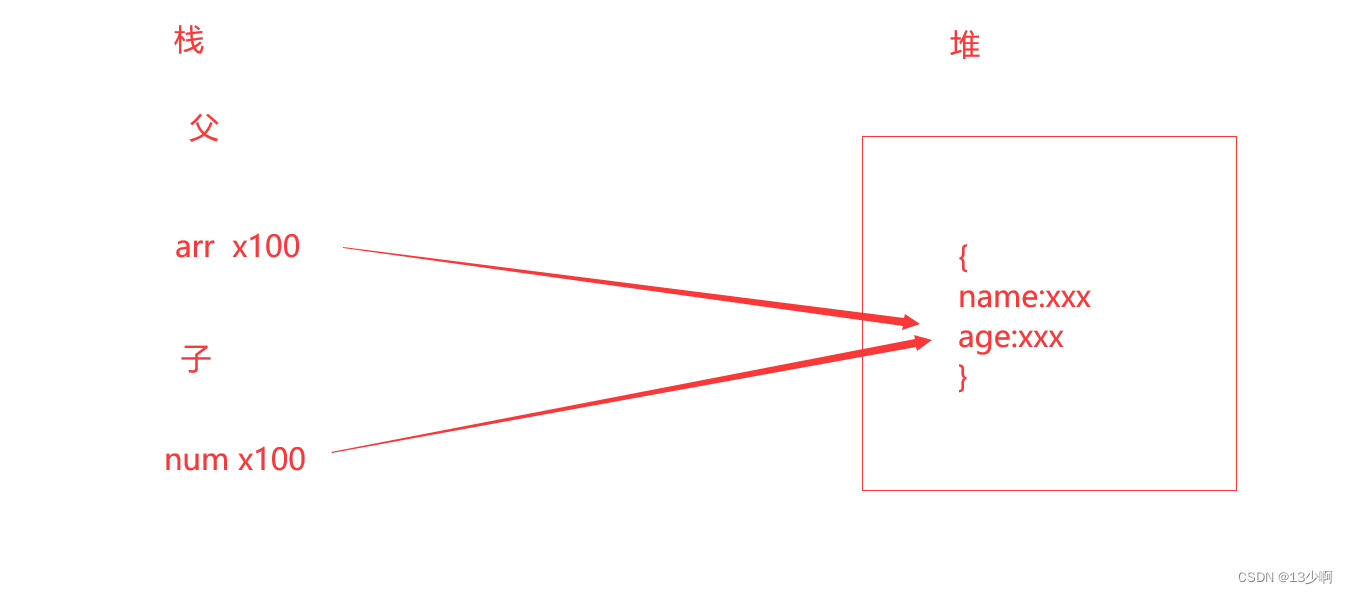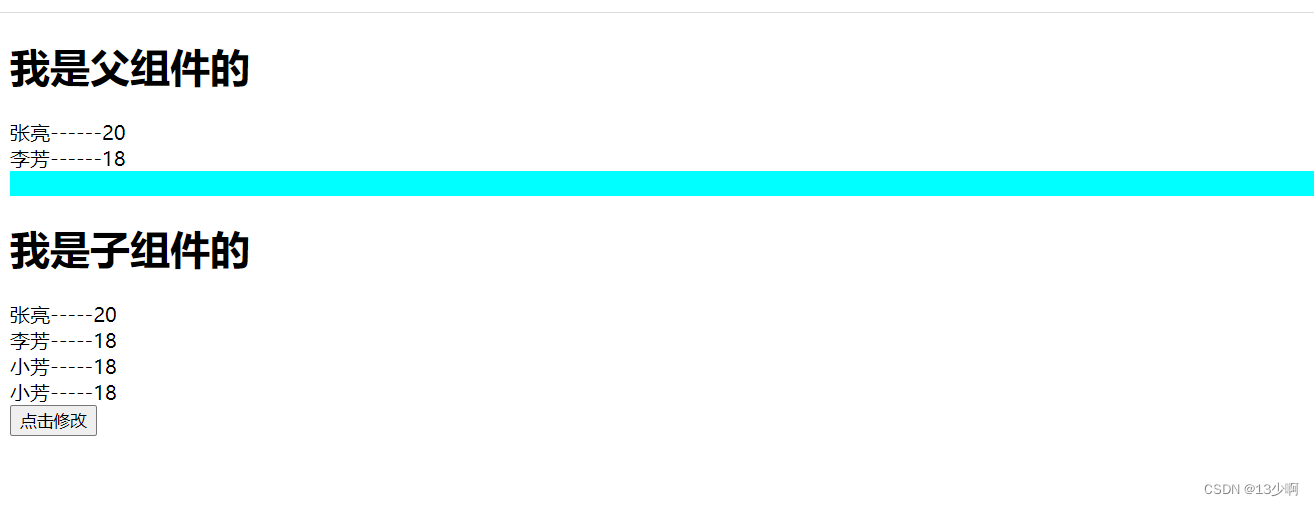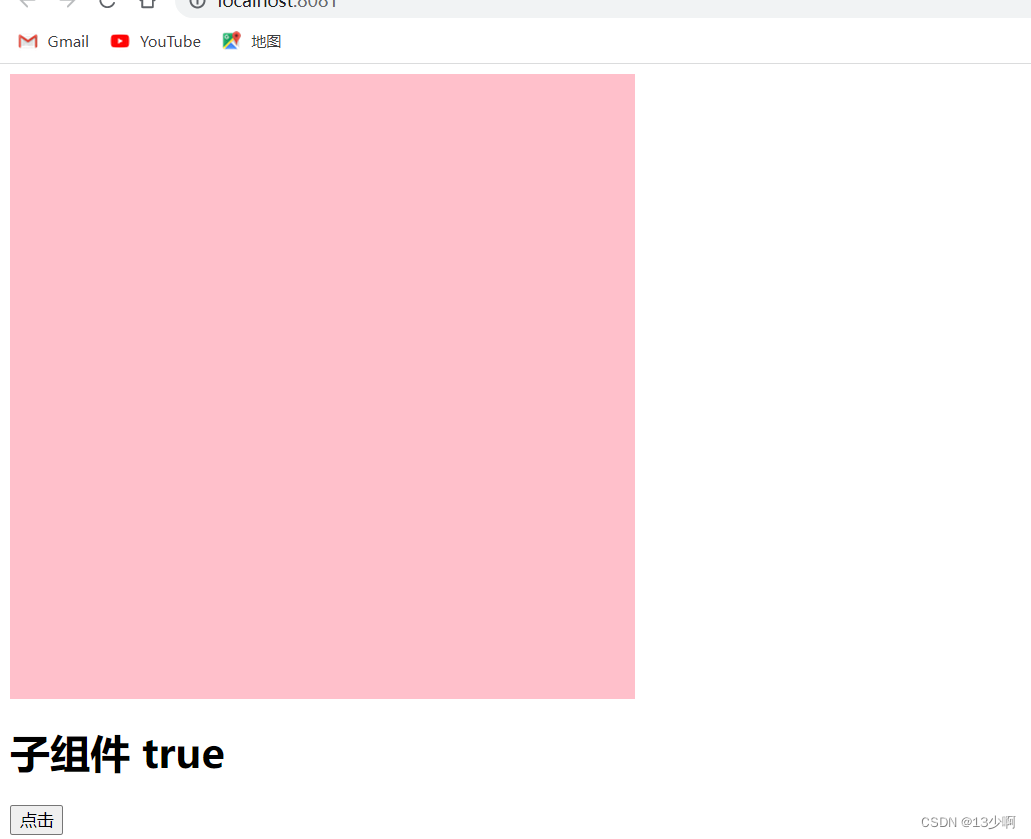简单数据类型不可修改,复杂数据类型可以修改,简单数据类型存储在栈中,复杂数据类型栈中存放指针,堆中存放数据。
一.简单数据类型不可直接修改
<template>
<div class="">
<One :num="aa" />
</div>
</template>
<script>
import One from "@/components/One.vue";
export default {
components: {
One,
},
data() {
return {
aa: 123,
};
},
name: "",
methods: {},
};
</script>
<style scoped></style>
<template>
<div class="">
<h1>{
{ num }}</h1>
<button @click="fn">点击修改 </button>
</div>
</template>
<script>
export default {
props: {
num: {
type: Number,
default: 10,
},
},
name: "",
methods: {
fn() {
this.num = 321;
},
},
};
</script>
<style scoped></style>
点击按钮之后:

正确的修改方式:
<template>
<div class="">
<h1>{
{ cc }}</h1>
<button @click="fn">点击修改</button>
</div>
</template>
<script>
export default {
props: {
num: {
type: Number,
default: 10,
},
},
data() {
return {
cc: this.num,
};
},
name: "",
methods: {
fn() {
this.cc = 321;
},
},
};
</script>
<style scoped></style>
将它的值重新赋值给一个变量,然后在去修改这个变量,这样就与父组件不建立联系。
或者去通知父组件去修改,也就是子传父。
<template>
<div class="">
<One :num="aa" @input="show" />
</div>
</template>
<script>
import One from "@/components/One.vue";
export default {
components: {
One,
},
data() {
return {
aa: 123,
};
},
name: "",
methods: {
show(val) {
this.aa = val;
},
},
};
</script>
<style scoped></style>
<template>
<div class="">
<h1>{
{ num }}</h1>
<button @click="fn">点击修改</button>
</div>
</template>
<script>
export default {
props: {
num: {
type: Number,
default: 10,
},
},
data() {
return {};
},
name: "",
methods: {
fn() {
this.$emit("input", 321);
},
},
};
</script>
<style scoped></style>
二.复杂数据类型的传递
代码:
<template>
<div class="">
<h1>我是父组件的</h1>
<div v-for="(item, index) in arr" :key="index">
<div>{
{ item.name }}------{
{ item.age }}</div>
</div>
<One :num="arr" />
</div>
</template>
<script>
import One from "@/components/One.vue";
export default {
components: {
One,
},
data() {
return {
arr: [
{
name: "张亮",
age: 20,
},
{
name: "李芳",
age: 18,
},
],
};
},
name: "",
methods: {},
};
</script>
<style scoped></style>
<template>
<div class="">
<div class="aa" />
<h1>我是子组件的</h1>
<div v-for="(item, index) in num" :key="index">
<div>{
{ item.name }}-----{
{ item.age }}</div>
</div>
<button @click="fn">点击修改</button>
</div>
</template>
<script>
export default {
props: {
num: {
type: Array,
},
},
data() {
return {};
},
name: "",
methods: {
fn() {
this.num[0].name = "这个年纪";
},
},
};
</script>
<style scoped>
.aa {
width: 100%;
height: 20px;
background-color: aqua;
}
</style>
view视图:

点击修改后:

可以发现两个组件都发生了更改,造成这种的原因是什么呢?
还是因为复杂数据类型的存放问题,复杂数据类型存储在堆中,用的是同一个地址。
用图的表示:

直接用新变量替代:
<template>
<div class="">
<div class="aa" />
<h1>我是子组件的</h1>
<div v-for="(item, index) in cc" :key="index">
<div>{
{ item.name }}-----{
{ item.age }}</div>
</div>
<button @click="fn">点击修改</button>
</div>
</template>
<script>
export default {
props: {
num: {
type: Array,
},
},
data() {
return {
cc: this.num,
};
},
name: "",
methods: {
fn() {
this.cc[0].name = "一万次悲伤";
},
},
};
</script>
<style scoped>
.aa {
width: 100%;
height: 20px;
background-color: aqua;
}
</style>
错误的,因为地址并不用发生变化,这必然要用到深拷贝。
我们深拷贝一份在来看下:
<template>
<div class="">
<div class="aa" />
<h1>我是子组件的</h1>
<div v-for="(item, index) in newdata" :key="index">
<div>{
{ item.name }}-----{
{ item.age }}</div>
</div>
<button @click="fn">点击修改</button>
</div>
</template>
<script>
export default {
props: {
num: {
type: Array,
},
},
data() {
return {
newdata: [...this.num],
};
},
name: "",
methods: {
fn() {
this.newdata.push({
name: "小芳",
age: 18,
});
},
},
};
</script>
<style scoped>
.aa {
width: 100%;
height: 20px;
background-color: aqua;
}
</style>
view:

父子组件不再建立联系,实现了想要的效果。
三.可以通过ref来控制弹窗
<template>
<div class="">
<One :data1="isShow" ref="add" />
<button @click="fn">点击</button>
</div>
</template>
<script>
import One from "@/components/One.vue";
export default {
components: {
One,
},
data() {
return {
isShow: false,
};
},
name: "",
methods: {
fn() {
this.$refs.add.isShow = true;
},
},
};
</script>
<style scoped></style>
<template>
<div class="">
<div class="aa" v-if="isShow"></div>
<h1>子组件 {
{ isShow }}</h1>
</div>
</template>
<script>
export default {
data() {
return {
isShow: false,
};
},
name: "",
methods: {},
};
</script>
<style scoped>
.aa {
width: 500px;
height: 500px;
background-color: pink;
}
</style>

修改了子组件的值,并没有报错。